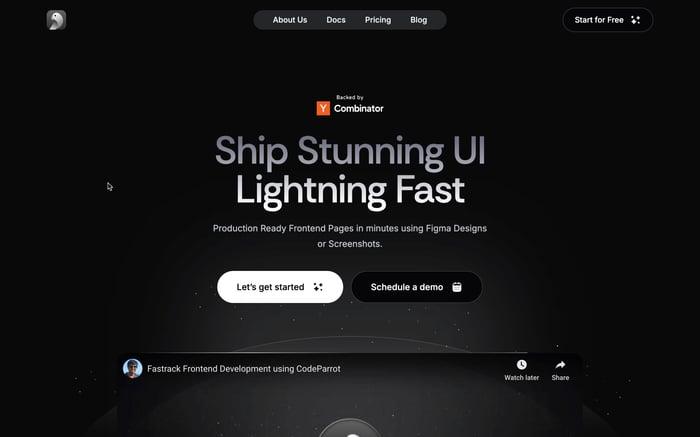

Modern Build Tools: Build your Web Applications Faster
Comparing most common build tools Webpack, Vite, Parcel, and Snowpack effiecient building.
What is Building?
"Building" refers to the process of transforming and bundling your source code into a format that browsers can efficiently interpret and execute. We use Build Tools for that.
- Transpiling: Converting modern JavaScript (ES6+) or other languages (like TypeScript) into a version compatible with a wider range of browsers.
- Bundling: Combining multiple files and modules into fewer files to reduce the number of HTTP requests needed to load your application.
- Minifying: Removing unnecessary characters (like whitespace) from your code to reduce its size, improving load times.
- Optimizing: Enhancing your code's performance by applying various techniques, such as tree shaking, which eliminates unused code.
- Efficiency: Build tools automate repetitive tasks, significantly speeding up the development process and minimizing human error.
- Compatibility: They help ensure that your application works across different browsers and devices by converting and polyfilling your code.
- Performance: By optimizing the size and structure of your code, build tools enhance your application's loading time and overall performance, contributing to a better user experience.
- Modern Features: They enable developers to use modern programming languages and techniques, such as JSX in React or modules in JavaScript, making development more robust and maintainable.
Webpack is a powerful module bundler primarily used for JavaScript but capable of transforming, bundling, or packaging just about any resource or asset. It takes modules with dependencies and generates static assets representing those modules.
- Entry: The entry point tells Webpack where to start and follows the graph of dependencies to know what to bundle.
- Output: It’s where to output the bundles it creates and how to name these files; usually in the
.distdirectory. - Loaders: Webpack only understands JavaScript and JSON files. Loaders allow Webpack to process other types of files and convert them into valid modules that can be bundled.
- Plugins: While loaders are used to transform certain types of modules, plugins can be leveraged to perform a wider range of tasks like bundle optimization, asset management, and injection of environment variables.
- Mode: By setting the mode parameter to either
development,production, ornone, Webpack can enable optimizations according to each environment. The default mode isproduction.
- Optimization: Webpack offers sophisticated optimization capabilities, including tree shaking to remove unused code, code splitting to load parts of the application on demand, and minimizing files for production.
- Developer Experience: Features like Hot Module Replacement (HMR) enhance the developer experience by updating modules in the browser without a full refresh.
- Customization: Through its use of loaders and plugins, Webpack can be tailored to the specific needs of any project, making it incredibly versatile.
- Initialize your project:
mkdir webpack-demo && cd webpack-demo
npm init -y
npm install webpack webpack-cli --save-dev
- Configure your entry and output:
Create a webpack.config.js in your project root:
const path = require("path");
module.exports = {
entry: "./src/index.js",
output: {
filename: "bundle.js",
path: path.resolve(__dirname, "dist"),
},
};- Add Loaders and Plugins:
Install a loader, for example, babel-loader for JavaScript:
npm install --save-dev babel-loader @babel/core @babel/preset-envAdd it to your webpack.config.js:
module: {
rules: [
{
test: /\.js$/,
exclude: /node_modules/,
use: {
loader: "babel-loader",
options: {
presets: ["@babel/preset-env"],
},
},
},
];
}- Add a script in your
package.jsonto run Webpack. Run Webpack withnpm run build
Vite is quickly gaining popularity for its focus on speed and efficiency, leveraging modern web technologies like ES modules.
- Speed: Utilizes native ES modules for serving code, resulting in extremely fast reload times, making it ideal for development.
- Simplicity: Offers out-of-the-box support for React, TypeScript, and other modern web technologies, requiring minimal configuration to get started.
- Optimization: Uses Rollup under the hood for the production build, ensuring your bundle is optimized for performance.
- Use Case: Best suited for new projects and modern web applications that can benefit from its rapid development cycle. Might be less optimal for very complex legacy projects that require the intricate customization Webpack offers.
To learn more about Vite. Please refer: Why Vite is the best?
Parcel Bundler stands out in the web development landscape for its user-friendly approach to bundling web applications. Known for its zero-configuration setup, Parcel allows developers to quickly bundle their projects without the need for complex setup or configuration files.
- Zero Configuration: Developers can initiate and bundle their web applications without creating configuration files.
- Support for Multiple File Types: Parcel effortlessly handles HTML, CSS, JavaScript, and numerous other file types.
- Performance: By utilizing multicore processing, Parcel achieves faster build times, making it an ideal choice for large-scale projects. The bundler efficiently follows and merges imported files, optimizing the application's performance by reducing HTTP requests.
- Install parcel-bundler from NPM
npm install parcel-bundler- Add a script in your
package.jsonto run Webpack. Run Webpack withnpm run build
- Code Splitting: Allows for dividing your code into various bundles, which can be loaded on demand or in parallel, improving the app's loading time.
- Hot Module Replacement (HMR): Enables developers to update modules in real time without reloading the entire page, streamlining the development process.
- Automatic Transformations: Parcel automatically processes file dependencies through Babel, PostCSS, and other transformers, adapting your project for production with minimal effort.
This modern build tool differentiates itself from traditional tools like Webpack and Parcel by eliminating the need for rebundling entire application chunks with every minor change during development.
This method involves serving individual files to the browser as they are during development, leveraging the browser's native support for ES Module (ESM) import and export syntax.
- Speed: Since each file is built only once and then cached, changes are reflected in the browser almost instantly, without the need for rebundling.
- Efficiency: The development process becomes significantly faster and more deterministic, as project size does not impact development speed.
- Debugging: Single-file builds are easier to debug since there’s no complex bundle obscuring the source.
- Caching: Files are cached more effectively, with the browser only downloading files as needed.
- Install parcel-bundler from NPM
npm install snowpack- Add a script in your
package.jsonto run Webpack. Run Webpack withnpm run build
- Starting a New Project? Consider Vite for its simplicity and speed if you're working with modern frameworks and standards. Parcel is also a good choice for quick setup without much configuration.
- Working on a Complex, Large-Scale Application? Webpack's extensive customization options make it a solid choice for handling complex bundling needs.
- Need Speed in Development? Snowpack and Vite are your go-tos for their fast rebuild times thanks to ESM.
- Looking for an Easy Setup with Good Performance? Parcel offers a balanced approach with zero configuration and efficient bundling.
Related articles

Development using CodeParrot AI




